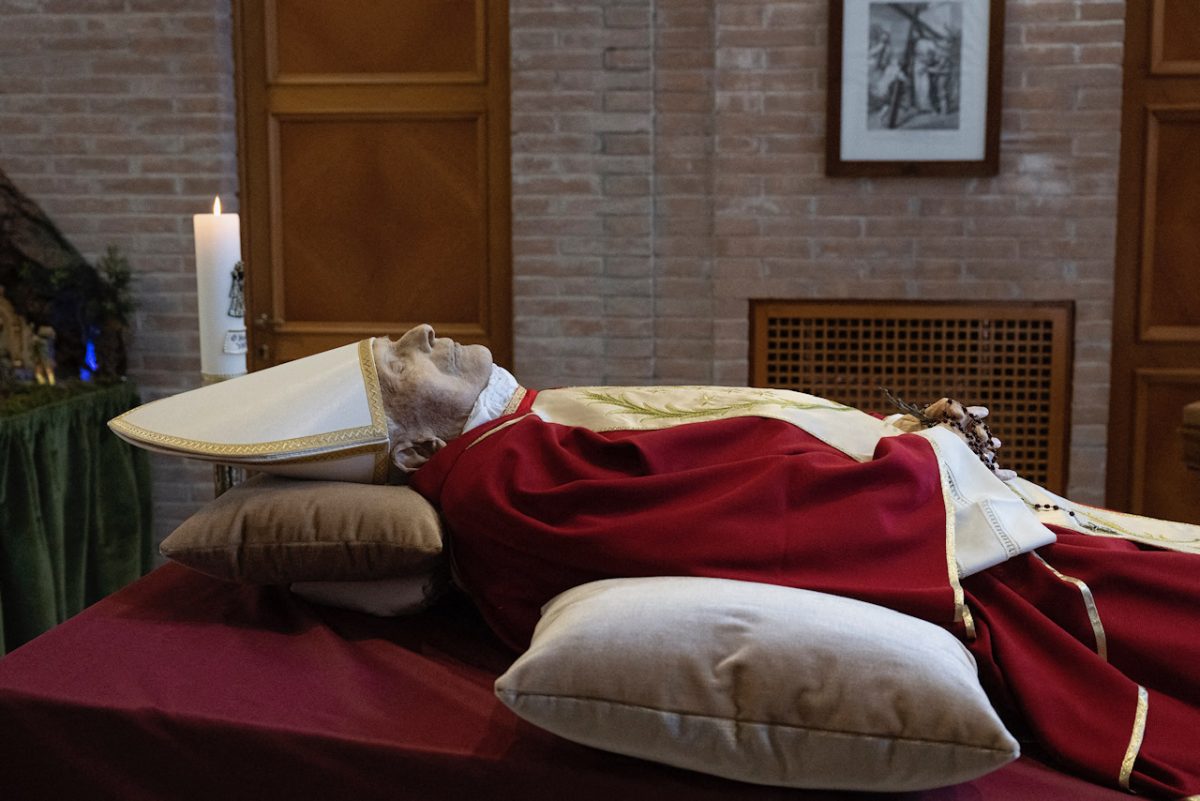Synonymous with hearts and red roses, Valentine’s Day has long defined the festivities of the month of February. It is estimated that Valentine’s Day, 2025, will rake in $28 billion of revenue from the sale of various goods, including 55 million pounds of candy, 24 million roses, and 145 million greeting cards in the United States alone. In addition to this, the day will host an expected 6 million engagements and 2.2 million weddings. Despite being perceived as a joyous and romantic holiday in modern times, the origins of Valentine’s Day are anything but that.
Like many other Western traditions, Valentine’s Day can be traced back to the time of Ancient Rome. The namesake and originator of the holiday, St. Valentine, was a Catholic priest officiating in Rome, Italy, during the third century AD. Despite there being few records of St. Valentine’s early life, his priesthood and later life are very well documented in official Roman and church records.
During his priesthood, St. Valentine became notorious for defying the Roman Emperor Claudius II, by officiating weddings between young men and women. In 270 AD, Claudius II outlawed the marriage of able-bodied men in an effort to increase military recruits, as he believed that marriage would distract men from serving him and the state. Unheeding Claudius II’s threats to kill priests who performed weddings for persons unauthorized by the state, St. Valentine officiated around 200 weddings in the year leading up to his death.
When news of his defiant actions reached the emperor, he ordered Valentine to be sent to jail and married the 200 women who had married without his consent in front of their husbands. St. Valentine was soon bound by ropes, flogged, and dragged through the city by a horse to his prison.
While healing from the injuries inflicted upon him in Claudius’s personal dungeon, St. Valentine befriended his jailer, Asterios. Asterios, greatly amazed by St. Valentine’s kindness and wisdom, requested the priest turned prisoner to teach his blind daughter, Julia, who had been dismissed by all other suitable teachers for her disability.
St. Valentine agreed and taught Julia in the humanities and science, but most importantly the Bible.Though only seeing each other thrice a week due to restrictions placed by prison authorities, St. Valentine and Julia soon formed a deep friendship engrained with their faith in God.
After some time in prison, reports of St. Valentine’s amiable nature spread to Claudius II himself. Upon hearing these accounts, the Emperor decided to personally visit St. Valentine in jail, and after visiting, was greatly impressed by the latter, prompting him to offer a pardon for the priest if he would renounce his Christian faith and agree to swear allegiance to the Roman gods. However, being a devout Christian, St. Valentine not only refused to leave his faith, but started preaching the Bible to the pagan Emperor. Enraged, Claudius II ordered St. Valentine to be brutally executed.
Awaiting his execution, St. Valentine, in solitary confinement, wrote Julia a final note encouraging her to believe in Jesus and expressing his friendship for her. At the end of the note he signed: “From your Valentine.” This note, now known as the first valentine, began the tradition of individuals writing short, thoughtful letters to loved ones on Valentine’s Day.
The next day, on February 14th, 270 AD, St. Valentine was stoned, whipped, and beheaded. This date would be later memorialized nearly 200 years afterward by Pope Gelasius in 496 AD by the addition of the liturgical calendar as Saint Valentine’s Feast Day, the precursor to the modern-day Valentine’s Day.
The celebrations instated by the pope remained largely religious until the Middle Ages, when various poets, such as Geoffrey Chaucer began connecting the holiday with love and courtship in their writing and romantic poetry. These poets were in part influenced by the notion that St. Valentine was martyred for uniting love couples in marriage. This poetic adaptation of Valentine’s Day soon grew in popularity in parts of Europe, with the prevalence of courtship during the era aiding in its rise. By the end of the 17th century, the modern connotations for Valentine’s Day had taken root and overshadowed, or in some places, even replaced, the original religious traditions of St. Valentine’s Day. Common Valentine’s Day observances at the time included giving out handwritten cards and offering pink or white roses, which symbolized romance and purity respectively, but not red roses, as they were seen as indicative of vulgarity.
During the Victorian Era, vinegar valentines became to be known as quintessential in the celebrations of Valentine’s Day. Vinegar valentines were elaborate notes or short letters given, primarily by women, to possible suitors as a communication of their rejection. These letters were designed to be dramatic and, according to popular saying at the time, “to break their hearts in a minute to equal the way we break our backs for them in a year”. This tradition gradually faded as the 19th century came to a close, and was replaced by an even odder tradition, the Valentine’s Day Visit of Saint Valentine.
During this event, a local man would dress himself as the beaten and maltreated St. Valentine by covering himself with animal’s blood and visiting the homes of little children under the age of 10. Per custom, these children would be put to bed early without supper and locked in their bedrooms. Around 8 PM, after darkness had set, St. Valentine impersonators would enter houses with children and visit their bedrooms. After being admitted, the actors would enter singing, “Little child, little child, St. Valentine is here, get up, get up, blessings are here, get some candy, come over here!” Despite nonexistent in its original form, this tradition is from where our modern practice of giving candy on Valentine’s Day comes from
In the 1950s and 1960s, the practice of going to drive-in cinemas with a significant other on Valentine’s Day became popular. Other significant mid century Valentine’s Day celebrations included visiting lover’s lanes, parking lots intended for the use of recreation, and wearing red, pink, or white, a tradition that endures to this day.
Today, Valentine’s Day has expanded beyond its original religious and romantic connotations to encompass filial love and affection for colleagues and friends. As a result of these changes, Valentine’s Day socials, such as Galentines for women, and Palentines for men, have grown in popularity in the 21st century.





